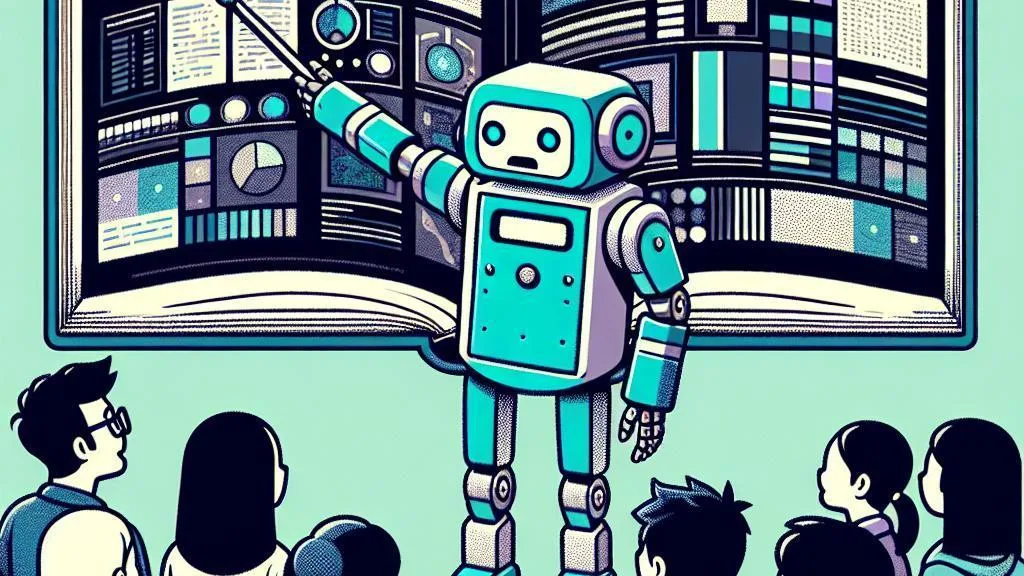Open source AI's and LLM's are going to be the winners in the end.. maybe
In our world teeming with technological marvels, the vibrant energy of open source in the …

Lesson planning is one of the most important yet time-consuming tasks educators face. It requires careful consideration of a student's needs, the lesson objectives, and the most effective teaching strategies. But what if we could harness the power of Artificial Intelligence to streamline the lesson planning process and create more personalised, data-driven lessons?
In this blog post, I'll explore how AI is revolutionising lesson planning and share some tips for effectively using AI tools in your teaching practice.

At its core, AI involves machines or computer systems performing tasks that typically require human intelligence, such as recognising patterns, making predictions, and solving problems. AI can take many forms in education, including machine learning algorithms that analyse student data to identify learning needs and adapt instruction accordingly, as well as natural language processing tools that can generate or analyse educational content.
One key application is in the creation of personalised learning experiences. AI systems can help teachers design lessons that cater to each learner's unique needs by analysing data on individual students' strengths, weaknesses, and learning preferences. For example, an AI-powered adaptive learning platform might identify that a particular student struggles with vocabulary retention and suggest incorporating more visual aids and mnemonic devices into their lessons.
AI can also help us create data-driven lesson plans by analysing information from various sources, such as student assessments, classroom observations, and learning management systems. By identifying patterns and trends in this data, AI tools can provide insights into which teaching strategies are most effective for different topics or groups of students. For instance, an intelligent tutoring system might reveal that students learn a particular grammar concept more quickly through inductive reasoning rather than explicit instruction.
Of course, using AI in lesson planning is not without its challenges and limitations. One major concern is data privacy and security - we must ensure that any student data collected and analysed by AI systems is handled ethically and complies with relevant regulations. There's also the risk of AI systems perpetuating biases in their training data or failing to account for the nuances of individual classroom contexts.
Teachers must view AI as a supportive tool rather than a replacement for our professional judgment and expertise. Before using any AI-generated lesson content, teachers should review it carefully to check for logical inconsistencies, inappropriate language or examples, misalignment with specific students' needs, and all teaching methodologies.

Some key best practices for using AI effectively in lesson planning include:
By following these guidelines and maintaining a critical eye, we can leverage the power of AI to enhance our lesson planning while still upholding the quality and human touch essential to effective language teaching. Through resources like the 30-hour AI for Language Teaching course, TEFL/TESOL educators can responsibly build their AI literacy and learn to harness these cutting-edge tools.
Integrating AI into lesson planning can save significant time, provide data-driven insights to inform instructional decisions, and help create more targeted, personalised learning experiences for students. As educational AI continues to evolve, it's an exciting opportunity for language teachers to explore how we can adapt and optimise our practices. By proactively developing our AI skills and knowledge, we can shape the role of this powerful technology in our field and ensure that it supports our ultimate goal of fostering meaningful language acquisition for our learners.
Some other posts you may like

Open source AI's and LLM's are going to be the winners in the end.. maybe
In our world teeming with technological marvels, the vibrant energy of open source in the …
July 05, 2024
Read More
How can AI improve data analytics in marketing for better insights?
In marketing, data analytics remains at the forefront of strategic decision-making. However, sifting through the …
July 05, 2024
Read More